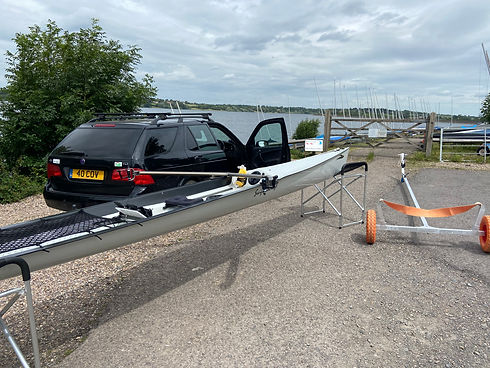
Essential equipment
Kit for Coastal rowers
Spare blades
The shore break can be fun but also heavy on blades if you catch the spoon in the sand and pull the shaft against the gate...
Croker will sell you blades that have been used in the World Champs without breakages and other manufacturers such as Swift have beefed up Coastal-specific designs. Pay your money and take your choice.

Spare seat wheels
Salt water and sand don't mix with wheel bearings. We seem to be changing ours every 6 months or so.
Some touring groups will take a spare seat in an emergency bag just in case of a problem.
Whatever you do - its good to take a spare set unless you live next door to a rowing shop... which most of us don't.
Neaves Rowing are great for spares and advice. They also make a comfy foam seat that we are using in place of the carbon ones.

Spare gates
Alongside blades, its good to have spare gates - if you break a blade then it is best to also replace the gate as it may have taken a lot of stress.
In the past we have experienced failures in the 'hinge' area - where the plastic split and the retaining bar was then useless and dropped out, resulting in a long walk up the beach.
If in doubt, change it and dispose of it - don't save it for later... when you may forget its history and us it by mistake.
Neaves Rowing supply replacement parts.

Buoyancy aid and floating tow rope
World Rowing require these during offshore competitions and they make sense for your training and recreational activities too.
Makes sure that the rope is attached to a sturdy part of the boat - the forces can be great when recovering a boat from the surf... possibly with you attached!
The loose end of the rope needs to be stored somewhere accessible but in a way that it is secure enough not to be washed under the seat wheels by waves coming over the bow.

Waterproof phone, VHF radio & PLB
This may sound 'over the top' but we usually carry all three of these when rowing on open water - especially if there is a chance of offshore winds. A broken blade or gate can occur at any time and the weather forecast may not be as accurate as you hoped...
The mobile phone might be a good first option if you are close to the shore. VHF radios are good for contacting the coastguard and other boats but may suffer from shadows behind cliffs.
Personal Location Beacons (PLB's) are a last resort - they need to be properly registered in advance and once activated they alert the emergency services to you exact GPS position. Make sure that you tell the emergency contact your travel plans so that they can help provide guidance too.








